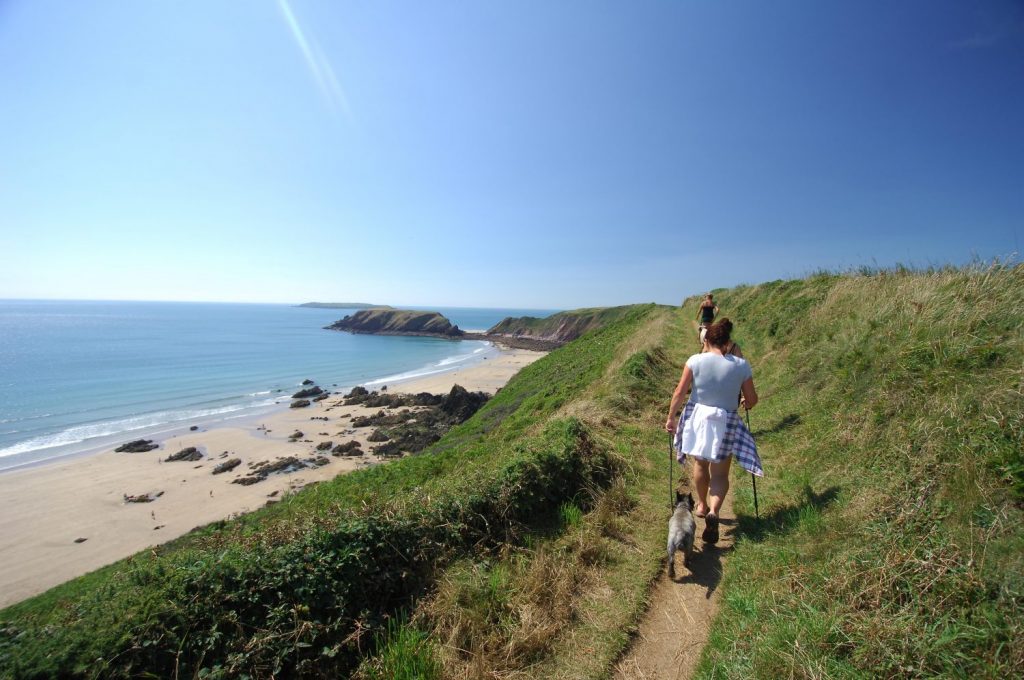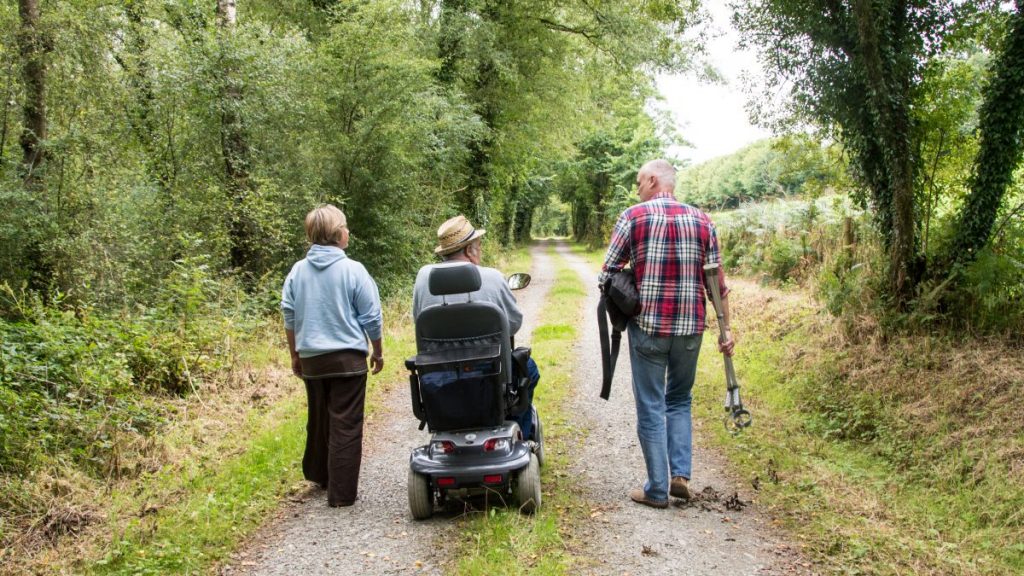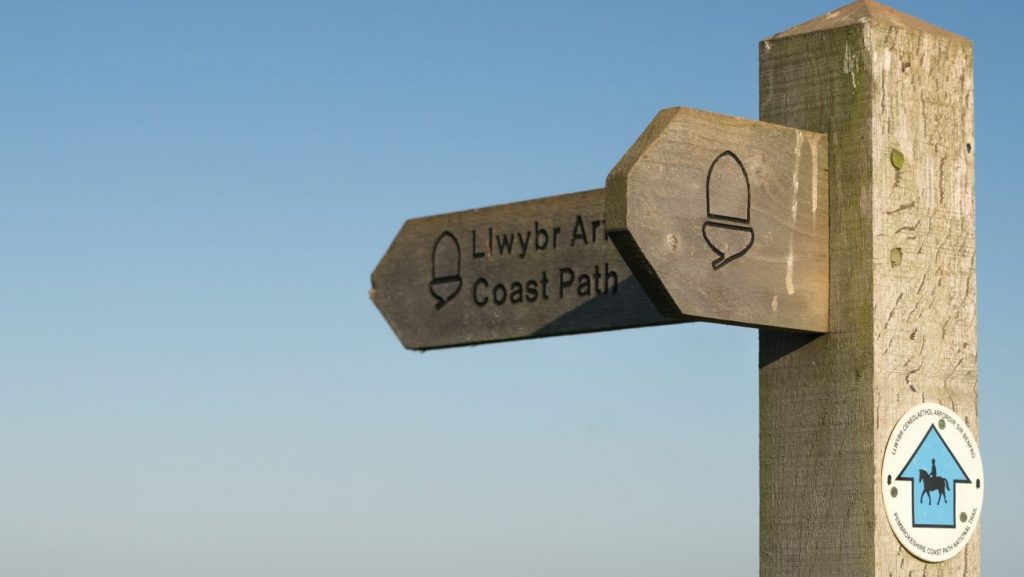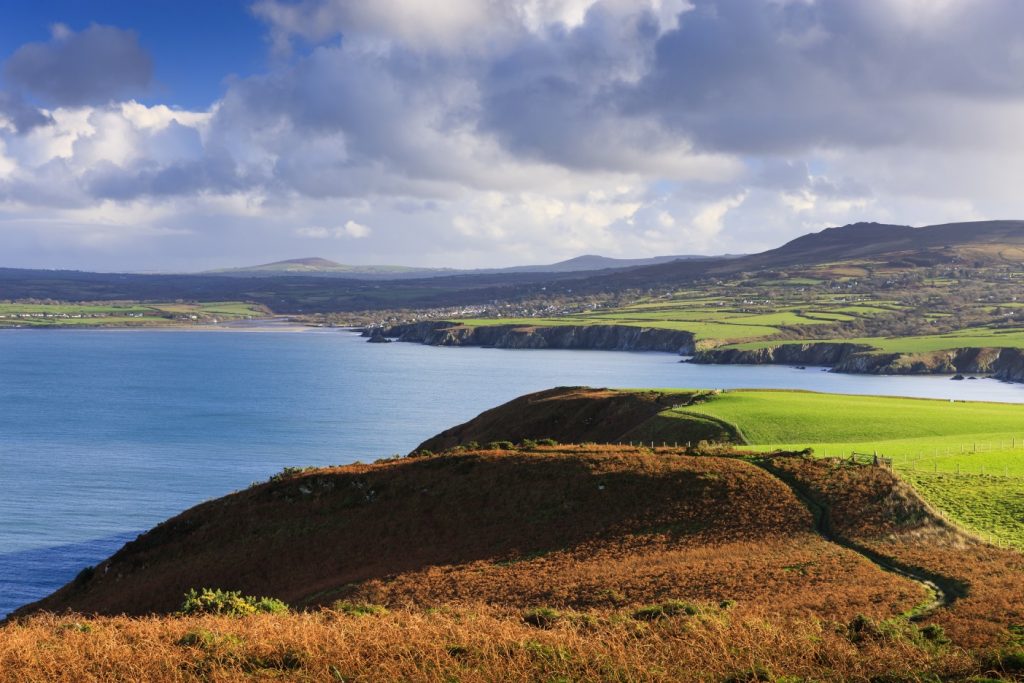DISTANCE/DURATION: Full circuit 3.3 miles (5.3 km) 1 hour 45 minutes. Carew Newton loop 1.6 miles (2.7 km) 1 hour. Milton loop 1.7 miles (2.8 km) 1 hour
PUBLIC TRANSPORT: Service Bus Carew/Milton 360/361
CHARACTER: Level, fields and livestock, stone stiles & steps, 800m road walking
LOOK OUT FOR: Medieval Castle, Millpond, Church and Carding Mill.
The Millpond at Carew Castle is one of the most beautiful locations in Pembrokeshire. On a still day when the tide is high the 23-acre expanse of water perfectly reflects the castle and nearby mill.
The Normans extended their conquest of England into Wales at the end of the 11th century and made Pembroke Castle the centre of their rule of South Pembrokeshire. The constable of Pembroke Castle, Gerald de Windsor, chose to build his own fortification at Carew, just up the tidal waterway from Pembroke.
But de Windsor was not the first to occupy the riverside site. Archaeologists have found signs of an Iron Age settlement close to the castle as well as Roman pottery.
The first castle was probably built of earth and wood. It was later replaced by a stone castle that was added to over the centuries.
The final development took place in the 16th century when the northern side of the building was remodelled, adding the grand windows that overlook the Millpond.
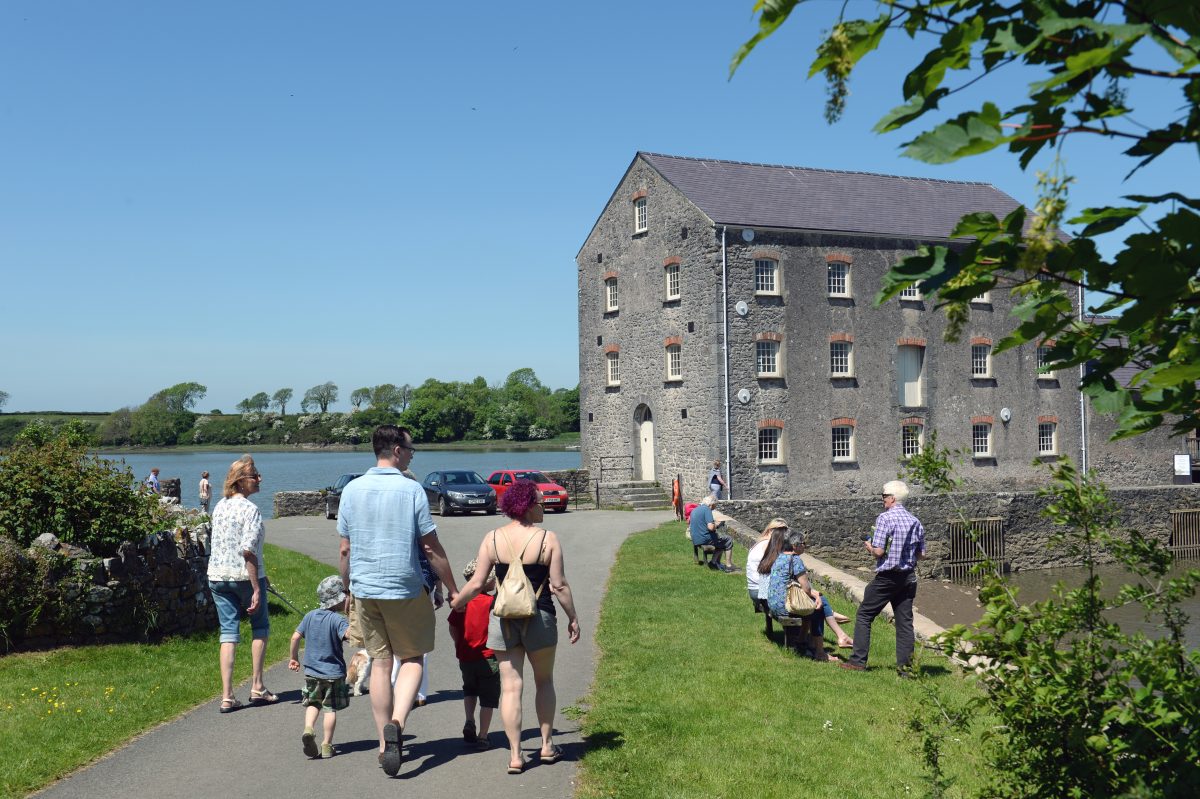
There was a mill at Carew as early as 1542. The present building probably dates from the early 19th century and is often known as the French Mill,
possibly because its millstones came from France.
The mill has now been restored and is administered by the National Park Authority. Visitors can see a permanent exhibition that traces the history of milling.
Carew has one obvious reminder of its pre-Norman past in the impressive, carved Celtic Cross. Pembrokeshire has more than 100 stones dating from the first centuries of Christianity and Carew’s cross is thought to have been raised as a memorial in 1035.
The area is excellent for bird watching. The pond attracts waders like redshank, curlew and common sandpiper as well as having resident swans.
The waterway is also a first class place to watch bats on summer evenings. More than half of all the species of bats found in Britain have been recorded at Carew.
Find this Walk
Grid ref: SN045037
COUNTRY CODE!
- Enjoy the countryside and respect its life and work
- Guard against all risk of fire
- Leave gates and property as you find them
- Keep your dogs under close control
- Keep to public paths across farmland
- Take your litter home
